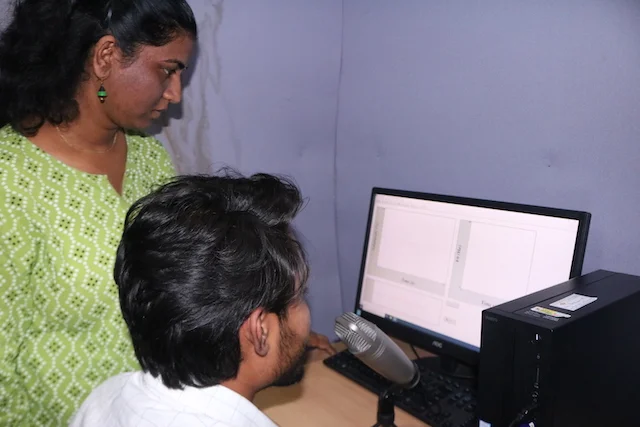Voice Disorders
Voice Problems
Voice of each individual is as unique as their finger print. Voice is produced by the vibration of the structure known as vocal folds in the larynx. When someone starts speaking, the air in their lungs moves, causing the vocal folds to move and producing sound.
When the vocal folds fail to vibrate synchronously on initiating voice it results in impaired voice production. The quality of your voice changes according to your age, excessive use of voice, psychological changes, various disease conditions and pathology. Any impairme

When to consult us?
If you face the following issues then you can consult us for an expert opinion on voice assessment and management
- Sudden loss of voice
- Not able to speak according to your age
- Change in voice quality after surgery
- Training to speak using alaryngeal mode of speech such as Tracheoesophageal speech, Speaking using electrolarynx and esophageal speech training post total laryngectomy surgery.
- Feeling of tension in voice production.
- Not able to have a voice that represents your gender
What do we do ? – Voice Assessment – Online and Offline Voice Assessment
The speech-language pathologist at our center will be able to help you understand the reason for your change in voice through a detailed voice evaluation using subjective and objective voice assessment.
- Subjective Voice Assessment using standardized scales of measurement
- Objective Voice Assessment using Praat and Vaghmi Software.
- Voice Therapy (Offline and Online)
At our institute, our voice expert can provide voice hygiene tips and voice therapy by using evidence-based practices. There are certain voice therapy exercises that can help to improve the approximation of the vocal folds, reduce the tension in your laryngeal area, etc. Such kinds of vocal function exercises are provided by our voice expert at our institute.
Our voice experts help to provide,
- Vocal warm-up exercises for professional voice users
- Vocal hygiene tips
- Vocal fold approximation exercises
- Alaryngeal voice therapy using TEP and Electrolarynx
- Oesophageal Speech Training
- Semi Occluded Vocal Tract Exercises
Frequently Asked Questions
Several issues could cause a problem with voice quality, such as growth on the vocal cords, vocal overuse or misuse, cancer of the larynx, neurological conditions and paralysis of vocal cords, and inflammation caused by gastroesophageal reflux.
Previously, voice therapy was included in Speech Therapy. However, as the field is developing, in recent years Speech Therapists have specifically specialized in Voice Therapy.
Voice Therapy involves identifying factors responsible for faulty voice behavior and retraining the vocal cords to function optimally.
As our vocal cords are very delicate, there is a high chance of damaging them due to vocal strain. Damage can be prevented when people at risk, avoid clearing their throat often, drink adequate water to keep acidity under control, avoid alcohol and coffee, and avoid speaking very loudly and use a microphone to reduce vocal strain.
Puberphonia is a condition where an adult male has a female voice; it’s a rare problem and is not associated with any weakness. Puberphonia is caused due to the malfunctioning of the vocal cords.
During puberty, young boys experience a drop in the pitch of their voices. However, this transition may not be smooth for some boys, and the high pitch voice stays or their voice undergoes a lot of pitch breaks.
Voice therapy is extremely beneficial in improving vocal patterns. Results can be seen in a very short time.
